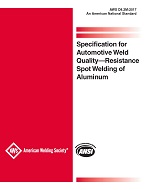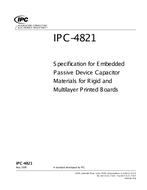
ASTM E2081-00(2004)e1
Original price was: $107.00.$64.00Current price is: $64.00.
Standard Guide for Risk-Based Corrective Action
standard by ASTM International, 10/01/2004
1.1 This is a guide for conducting risk-based corrective action (RBCA) at chemical release sites based on protecting human health and the environment. The RBCA is a consistent decision-making process for the assessment and response to chemical releases. Chemical release sites vary greatly in terms of complexity, physical and chemical characteristics, and in the risk that they may pose to human health and the environment. The RBCA process recognizes this diversity by using a tiered approach that integrates site assessment and response actions with human health and ecological risk assessment to determine the need for remedial action and to tailor corrective action activities to site-specific conditions and risks. The evaluations and methods used in the RBCA process begin with simple analyses in Tier 1 and move to more complex evaluations in either Tier 2 or Tier 3, as applicable. The process of gathering and evaluating data is conducted in a scaled fashion. Consequently, only the data that are necessary for a particular tier’s decision-making are collected at that tier.
1.2 This guide describes an approach for risk-based corrective action. It is intended to help direct and streamline the corrective action process and to complement but not to supersede federal, state and local regulations. It can be employed at sites where corrective action is being conducted including sites where there may not be a regulatory framework for corrective action, or where the user wishes to conduct corrective action such as sites in voluntary cleanup programs or under Brownfields initiatives. In addition, it can also be used as a unifying framework when several different agency programs affect the site. Furthermore, the user should be aware of the federal, state and local corrective action programs that are applicable for the site and, regardless of the program, federal, state and local agency approvals may be required to implement the processes outlined in this guide. Finally, regardless of whether a corrective action is specifically governed by a regulatory program, the user should consult the regulatory agency requirements to identify the appropriate technical policy decisions prior to implementing the RBCA process.
1.3 There are numerous technical policy decisions that must be made to implement the RBCA process, for example, defining data quality objectives, determining target risk levels, specifying the appropriate statistics and sample sizes for calculating exposure concentrations, selection of exposure assumptions, determining when and how to account for cumulative risks and additive effects among chemical(s) of concern and addressing resource protection. It is not the intent of this guide to define appropriate technical policy decisions. The user must identify the appropriate technical policy decisions.
1.4 The general performance standard for this guide requires that:
1.4.1 Technical policy decisions be identified before beginning the process,
1.4.2 Data and information collected during the RBCA process, including historical data as well as new data collected during the site assessment, will be relevant to and of sufficient quantity and quality to answer the questions posed by and the decisions to be made in the RBCA process,
1.4.3 Actions taken during the risk-based decision process will be protective of human health and the environment,
1.4.4 Applicable federal, state and local regulations will be followed (for example, waste management requirements, ground water designations, worker protection) and,
1.4.5 Remedial actions implemented will not result in higher risk levels than existed before taking actions.
1.5 ASTM standards are not federal or state regulations, they are consensus standards that can voluntarily be followed.
1.6 The RBCA process is not limited to a particular class of compounds. This guide is intended to be a companion to Guide E1739, and does not supersede that document for petroleum releases. If a release site contains a mixture of releases of petroleum and other chemicals, this guide should be followed.
1.7 The United States Environmental Protection Agency (USEPA) has developed guidance for human health risk evaluation (see Appendix X8 for other resources). Many of the components of this guidance have been integrated into the RBCA framework. The science of ecological evaluation and the process by which the science is applied, however, are not as well defined and agreed upon as human health risk assessment. Therefore, the information provided in this guide for each tier evaluation for relevant ecological receptors and habitats is general. The user is referred to Appendix X5, which provides additional information regarding the development of a RBCA framework for protection of ecological resources.
1.8 The decision process described in this guide integrates exposure and risk assessment practices with site assessment activities and remedial action selection to ensure that the chosen actions are protective of human health and the environment. The following general sequence of events is prescribed in RBCA:
1.8.1 Perform an initial site assessment and develop the first iteration of the site conceptual model. If the information is sufficient to demonstrate that there are no complete or potentially complete exposure pathways, then no further action is warranted,
1.8.2 Evaluate the site (see definition of site 3.2.50) for response actions (multiple sites at a single facility may require different response actions and times),
1.8.3 Implement a response action that is appropriate for conditions found at the site during the site response action evaluation,
1.8.4 Define data requirements, develop data quality objectives, and perform a site assessment for the Tier 1 evaluation if the site conceptual model indicates that the tiered evaluation is appropriate,
1.8.5 Conduct an exposure pathway analysis to determine if relevant ecological receptors and habitats are present and if complete and potentially complete exposure pathways are present. If no relevant ecological receptors or habitats or complete and potentially complete exposure pathways exist, then no further action for relevant ecological receptors and habitats is warranted,
1.8.6 For potential human exposure pathways, identify the applicable Risk Based Screening Levels (RBSL) and for potential ecological exposure pathways, identify the applicable Relevant Ecological Screening Criteria (RESC). In addition, identify any Other Relevant Measurable Criteria (ORMC), as applicable. Collectively these are the Tier 1 corrective action goals for the site;
1.8.7 Compare site conditions to the Tier 1 corrective action goals determined to be applicable to the site;
1.8.8 If site conditions meet the corrective action goals for chemical(s) of concern then, no further action is warranted,
1.8.9 If site conditions do not meet corrective action goals for chemical(s) of concern then, one or more of the following actions is appropriate:
1.8.9.1 Further tier evaluation;
1.8.9.2 Implement interim remedial action;
1.8.9.3 Design and implement remedial action to achieve the corrective action goals.
1.8.10 Define Tier 2 data requirements, data quality objectives, collect additional site-specific information and update the site conceptual model, as necessary, if further tier evaluation is warranted,
1.8.11 Develop point(s) of demonstration and Tier 2 corrective action goals based on Site-Specific Target Levels (SSTL), Site-Specific Ecological Criteria (SSEC) or ORMC, where appropriate, for complete and potentially complete exposure pathways, including exposure pathways for which no RBSL, RESC or ORMC, as applicable, were determined;
1.8.12 Compare site conditions to the Tier 2 corrective action goals determined to be applicable to the site;
1.8.13 If site conditions meet corrective action goals for chemical(s) of concern, then no further action is warranted,
1.8.14 If site conditions do not meet corrective action goals for chemical(s) of concern then, one or more of the following actions is appropriate:
1.8.14.1 Further tier evaluation;
1.8.14.2 Implement interim remedial action;
1.8.14.3 Design and implement remedial action to achieve the corrective action goals.
1.8.15 Define Tier 3 data requirements, data quality objectives and collect additional site-specific information and update the site conceptual model, as necessary, if further tier evaluation is warranted,
1.8.16 Develop point(s) of demonstration and Tier 3 corrective action goals based on SSTL, SSEC, or ORMC, where appropriate;
1.8.17 Compare site conditions to the Tier 3 corrective action goals,
1.8.18 If site conditions meet corrective action goals for chemical(s) of concern, then no further action is warranted,
1.8.19 If site conditions do not meet corrective action goals for chemical(s) of concern, then one of the following actions is appropriate:
1.18.19.1 Implement interim remedial action to facilitate reassessment of the tier evaluation;
1.8.19.2 Design and implement remedial action to achieve the corrective action goals.
1.8.20 Develop and implement a monitoring plan based on the corrective action goals to validate the assumptions used for the tier evaluation and to demonstrate effectiveness of the remedial action, as applicable.
1.9 For chemical release sites currently in corrective action, the user should review information and data available for the site and determine the most appropriate entry point into the RBCA framework consistent with the general performance standards and sequence of events outlined in this guide.
1.10 This Guide is Organized as Follows–Section 2 lists referenced documents, Section 3 defines terminology used in this guide, Section 4 describes the significance and use of this guide, Section 5 is a summary of the tiered approach, and Section 6 presents the RBCA procedures in a step-by-step process. Appendix X1 provides guidance on developing technical policy decisions and building a RBCA program, Appendix X2 provides examples of chemical properties and effects data that may be useful for a RBCA evaluation, Appendix X3 provides EXAMPLE development of RBSL, Appendix X4 describes the use of predictive modeling, Appendix X5 provides an outline of the process of the ecological evaluation, Appendix X6 provides information about activity and use limitations, Appendix X7 includes illustrative examples of the application of the RBCA framework, and Appendix X8 includes references that may be helpful to the user. The Appendixes are provided for additional information and are NOT included as mandatory sections of this guide.
Product Details
- Published:
- 10/01/2004
- Number of Pages:
- 95
- File Size:
- 1 file , 3.9 MB
- Note:
- This product is unavailable in Russia, Ukraine, Belarus



